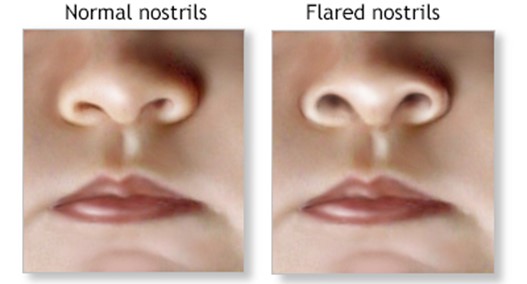A nurse is administering erythromycin eye ointment to a newborn who has a history of allergic reaction to penicillin.
What should the nurse do before applying the ointment?
Ask the mother if she has any allergies to antibiotics
Check if there is any cross-sensitivity between erythromycin and penicillin
Apply a small amount of ointment on the skin to test for allergic reaction
Administer an antihistamine to prevent anaphylaxis
The Correct Answer is B
The correct answer is choice B. Check if there is any cross-sensitivity between erythromycin and penicillin. Erythromycin is a macrolide antibiotic that can be used to treat bacterial eye infections in newborns and adults.
Penicillin is a beta-lactam antibiotic that can cause allergic reactions in some people.
Cross-sensitivity means that a person who is allergic to one type of antibiotic may also be allergic to another type of antibiotic that has a similar structure or mechanism of action. Erythromycin and penicillin have different structures and mechanisms of action, but there is still a small chance of cross-sensitivity between them.
Therefore, the nurse should check if the newborn has any history of allergic reaction to penicillin before applying the erythromycin eye ointment.
Choice A is wrong because asking the mother if she has any allergies to antibiotics is not enough to determine if the newborn is at risk of an allergic reaction to erythromycin.
The newborn may have inherited or developed an allergy to penicillin or erythromycin that the mother does not have.
Choice C is wrong because applying a small amount of ointment on the skin to test for allergic reaction is not a reliable method to diagnose an allergy. Skin testing can cause false positive or false negative results, and it may also trigger a severe allergic reaction in some cases.
Choice D is wrong because administering an antihistamine to prevent anaphylaxis is not appropriate for a newborn who has not been exposed to the allergen yet.
An antihistamine is a medication that blocks the effects of histamine, a chemical that causes allergic symptoms.
Anaphylaxis is a life-threatening allergic reaction that involves multiple organ systems and requires immediate medical attention. An antihistamine cannot prevent anaphylaxis, and it may also cause side effects such as drowsiness, dry mouth, or low blood pressure in a newborn.
Nursing Test Bank
Naxlex Comprehensive Predictor Exams
Related Questions
Correct Answer is C
Explanation
The correct answer is choice C. Nasal flaring and grunting are signs of respiratory distress in a newborn and should alert the nurse to a potential problem.
The nurse should monitor the newborn’s respiratory rate, oxygen saturation, and chest movements, and notify the provider if the symptoms persist or worsen.
Choice A is wrong because molding of the head is a normal finding in a newborn who was delivered vaginally.
It is caused by the pressure of the birth canal on the skull bones and usually resolves within a few days.
Choice B is wrong because acrocyanosis of hands and feet is a normal finding in a newborn during the first 24 hours of life.
It is caused by poor peripheral circulation and does not indicate hypoxia or cyanosis.
Choice D is wrong because vernix caseosa on skin folds is a normal finding in a newborn.
It is a white, cheesy substance that protects the skin from amniotic fluid and helps with thermoregulation.
It usually disappears within a few days.

Correct Answer is A
Explanation
The correct answer is choice A. Administer fresh frozen plasma.This is because fresh frozen plasma contains clotting factors that can help stop the bleeding caused by vitamin K deficiency.Vitamin K is needed for the synthesis of clotting factors in the liver, but newborns have low levels of vitamin K and may develop vitamin K deficiency bleeding (VKDB) if they do not receive prophylaxis at birth.VKDB can manifest as bleeding in various sites, such as the skin, mucous membranes, umbilicus, gastrointestinal tract, or central nervous system.
Choice B is wrong because packed red blood cells do not contain clotting factors and will not correct the underlying deficiency of vitamin K.
Choice C is wrong because intravenous immunoglobulin is used to treat immune-mediated thrombocytopenia, not vitamin K deficiency.
Choice D is wrong because recombinant erythropoietin is used to stimulate red blood cell production in anemia, not to treat bleeding disorders.
Early-onset VKDB occurs within 24 hours of birth and is associated with maternal use of drugs that interfere with vitamin K metabolism, such as anticoagulants, anticonvulsants, or antituberculosis drugs.
These drugs induce the enzymes that break down vitamin K in the fetal liver
Whether you are a student looking to ace your exams or a practicing nurse seeking to enhance your expertise , our nursing education contents will empower you with the confidence and competence to make a difference in the lives of patients and become a respected leader in the healthcare field.
Visit Naxlex, invest in your future and unlock endless possibilities with our unparalleled nursing education contents today
Report Wrong Answer on the Current Question
Do you disagree with the answer? If yes, what is your expected answer? Explain.
Kindly be descriptive with the issue you are facing.
